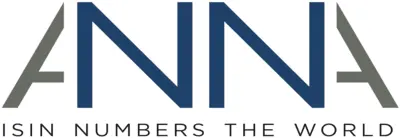First published on TabbFORUM, 25 June 2025. A universal language Consensus-based financial standards developed by…
Financial Instrument Identifiers: One international standard setting the bar
Chief Risk Officers are keen to stem losses linked to operational risk, as well as minimising the costs involved in managing the all-important mountain of data that financial institutions find themselves sitting on. One way to reduce operational friction in this area is by reducing risk and potential conflict around the standards used to identify financial instruments. It is imperative that these unique instrument identifiers remain truly standardised across all Capital Market borders and consistently aligned so as to either avoid delays in settlement, or costly risk-laden results in data inconsistencies and operational challenges.
Principles of a financial instrument identifier
In order to reduce operational risk within market infrastructures, as well as the cost of integration and data supplementation, the following principles around identifiers of financial instruments need to realistically be adhered to:
- Standardisation: Standardisation is a mechanism to improve efficiency, interoperability and data quality across borders. ISO reference data standards for financial services provide standardised identifiers for the reference data elements of financial instruments. The ISO standard development process is one that utilises global industry expertise and considers industry concerns to achieve consensus acceptance of both the standard and its utility. This process, which includes the evaluation of the co-existence of each standard with other ISO reference data standards, as well as systematic reviews of the process whenever updates are required by changing market conditions, has produced exactly what the ISO organisation intended – simplicity, efficiency and effective streaming of information in a high-volume, complex business environment.
The success of ISO reference data standards in the financial services arena is shown by the ubiquity of these identifier codes in global transaction processing, the interconnected global network of financial information, the local and global infrastructure of clearing and settlement, and the virtually universal use of the international standards by financial regulators in requisitioning and analysing reporting data. These common standards are implemented across cultures, borders and irrespective of language spoken.
Beyond these achievements, the issuers, market participants and Regulatory Authorities implementing the ISO financial standards have created yet another critical asset for the financial industry – the archives of consistently formatted and defined reference data that are the result of the registration process for the ISO codes.
- Free and open: Financial firms should gain timely access to global identifiers, and all relevant underlying data when using identifiers, either for free or on a cost-recovery basis. Payment of licencing fees for the use of identifiers under a commercial, proprietary data structure does not fall under the auspices of identifiers being freely available or restricted on use.
- Extensibility and forward-looking: To ensure the longevity and usability of an identification framework, it must be able to adapt with changing market conditions. Extensibility is essential to accommodate coverage in gaps that form when financial instruments evolve, as well as for future analysis and development. The continued collaboration between market practitioners, subject matter experts and the international standards bodies, as previously touched upon, is key to the continuation of the development process.
Fit for purpose: International Securities Identification Numbering system (ISIN)
The ISIN (ISO 6166) and other reference data standards such as the Classification of Financial Instruments (CFI – ISO 10926), Financial Instrument Short Name (FISN – ISO 18774), Market Identification Code (MIC – ISO 10383) and Legal Entity Identifier (LEI – ISO 17442) are part of a broader family of ISO reference data standards for financial services that provide standardised codes for the reference data elements of financial instruments.
The ISIN was initially conceived more than 35 years ago to solve the problems of delay, mismatches and confusion in cross-border settlements. At the time, the local identification codes used to match transaction data were inconsistent within instrument definitions, data requirements and formatting. Matching cross-border trades involved interpreting records in different languages and non-equivalent standards – with inherent delays and difficulties created risk for all participants.
The ISIN was adopted globally – first by the major capital markets and subsequently by virtually every other nation worldwide – as a common international standard to enable recognition and processing of transactions, recordkeeping and regulatory reporting, no matter where the instrument originated, where it has been deposited for settlement or where the counterparties were located. As such, it has massively reduced delay, confusion and risks in global financial markets. The successful adoption of the ISIN has led to its continued evolution to remain fit for purpose through changing market conditions and introduction of new instrument types. ISIN is the globally accepted industry standard across asset classes.
With the expansion of ISIN coverage into OTC derivatives, no gaps exist in ISIN asset class coverage. Since October 2017, the Derivatives Service Bureau (DSB) has been providing ISIN, CFI and FISN allocation for OTC derivatives on a near-real-time basis. Further innovations include a new initiative between ANNA (the Association of National Numbering Agencies) and GLEIF (the Global LEI Foundation) to link ISINs and LEIs to help improve transparency of exposure by connecting the issuer and issuance of securities. By linking the two ISO standards together, firms will be able to aggregate the data required to gain a clear view of their securities exposure within a given issuer and its related entities. The ISIN to LEI mapping table has been made freely available to all without restriction.
Today ISIN is recognised as the global standard for unique identification of financial instruments in over 220 countries. Trading, clearing and settlement systems in most countries have adopted ISINs as their primary means of identifying securities. In addition, regulations which impact the global capital markets such as EMIR, MiFID II, CSDR, Prospectus Regulation, Benchmarks Regulation and Solvency II increasingly require the ISIN to be used for reporting purposes.
Tried and tested
Beyond the integration costs, delay and operational risks associated with the incompatibility with ISO reference data standards for financial services, there is a potential negative impact on industry access to commonly accepted standard data resources. Just as the established ISO reference data standards for financial services have delivered the secondary benefit of industry archives of accepted and standardised reference data, the proposed adoption of overlapping standards introduces the threat of fragmentation of this critical data resource. In this eventuality, the operational risk expands beyond the integration challenges of a single institution, to a systemic risk issue related to data authenticity.
Further, there should be no single point of failure in the maintenance of standards. In that respect, ANNA is a member association where the National Numbering Agency in a particular jurisdiction is responsible for the allocation and maintenance of ISIN, FISN and CFI codes in that region according to the respective ISO standards. There are currently 91 full members and 24 partners representing key market infrastructures within their jurisdictions; such as central securities depositories, exchanges, central banks and regulators, each requiring interoperability and integration with a broad range of global market participants. The primary roles of these entities require significant consumption and use of these standards, meaning they are also ideally placed to participate in their national standards bodies to contribute to the development and evolution of international standards in their local jurisdictions for the benefit of the capital markets as a whole.
With ISIN, operational risk has been crucially mitigated because the internationally-accepted standard has decreased fragmentation, which in turn has decreased cost, individual mapping necessities, risk, and unnecessary delays in settlements. In this world of constant change, rather than recreating processes wholesale, risk can be better contained by the continued use of tried-and-tested aspects such as common standards serving the international financial community well for over the past three decades.



